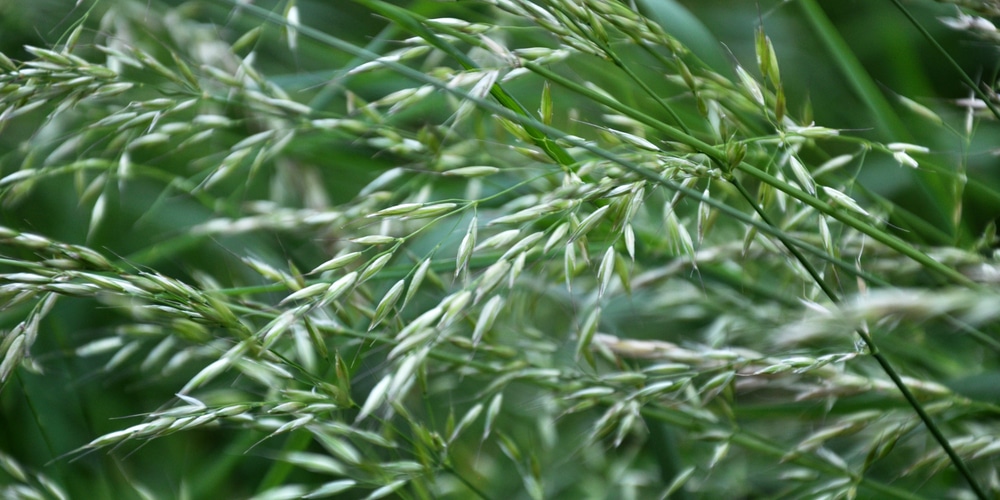Maintaining a lawn can be time-consuming. After all, you’ll have to mow it at least once a week, follow a regular watering schedule, feed your grass to ensure it gets all the nutrients it needs, and keep an eye out for weeds.
The worst thing about weeds is that you most likely won’t be able to recognize them at first. And not noticing them may result in their spread which, in the long run, will harm your garden.
So, we recommend you learn about the weed species that might attack your yard. But do you know the difference between Poa Annua and Crabgrass?
And why should you learn about it? We included all the information you must know on the topic in this Poa Annua Vs. Crabgrass essential guide.
What Is Poa Annua?

Poa annua is a self-seeding turf that most people know under the name of meadow grass or bluegrass.
The problem with this grass species is its aggressive spread, which contributed to its inclusion in the Global Compendium of Weeds. Indeed, this plant reproduces through plumed pods, which the wind carries away and might land on your lawn.
Unfortunately, you cannot control where the wind takes a plant’s seeds. However, you can take actions to prevent Poa annua from establishing itself in your garden. This weed will create unaesthetic light green spots in your yard that grow faster than other parts.
What is Crabgrass?
Crabgrass is an annual weed that, at first sight (you can read more about this in the following sections), may look similar to Poa Annua. This weed grows in a clumping habit and displays thick blades with star-shaped patterns in the center.
Crabgrass is not turf-type grass and, under ideal conditions, might dominate your garden. It thrives in warm climates and usually spreads faster during the summer when cold-season grasses go dormant.
You will notice it growing in thin or bare areas of your lawn or attack spots where your grass suffered from diseases or pest infestations. But what’s the difference between Poa Annua and Crabgrass?
Poa Annua Vs. Crabgrass
Poa Annua and Crabgrass display similar blades. However, if you look closely, crabgrass tends to be thicker and darker green than Poa Annua, which is thinner and brighter.
Crabgrass adapts to various climate conditions but will grow better during the summer. However, its seeds may lay dormant underground even during the winter, meaning you must take measures to remove them from your garden.
Both crabgrass and poa annua are weeds that are relatively challenging to eliminate. Indeed, they will withstand mowing and won’t have issues recovering.
Even after cutting the grass, they will start producing new seeds immediately. After all, some studies show that cutting the grass might be counterproductive if you try to remove these weeds!
You can tell your garden is suffering from a Poa Annua Infestation by looking at the color of your lawn: if there are bright green patches, you should have no doubts.
On the other hand, crabgrass will spread in clumps which will darken as the plant ages. Gardeners hate crabgrass because of its unattractive appearance, which can ruin the aesthetics of your lawn.
How to Remove Weeds From Your Lawn?
One of the most effective ways to prevent the spread of weeds on your lawn is to extirpate the first clumps. You can do so by hand. However, you must carefully remove the weeds from their roots to prevent infestations.
Also, remember that such a practice will only work if there aren’t many weeds in your garden. Alternatively, you will have to use a suitable herbicide.
If you want to prevent headaches, we recommend applying a pre-emergent herbicide to stop the weeds’ seeds from germinating. For poa annua, you should find a suitable product to add to your lawn in early fall and spring to prevent it from sprouting. Additionally, you can look for selective herbicides that will kill poa annua in lawns.
Eliminating crabgrass requires a similar effort. You can apply pre-emergent herbicides to prevent it from spreading. But if you have noticed the weeds’ presence in your garden, look for post-emergent products. Don’t forget to follow the instructions you find on the label to avoid harming your garden.
Also, consider applying a layer of mulch around your garden: it acts as an effective weed suppressor.
Related Article: Do Weeds Die in the Winter?

